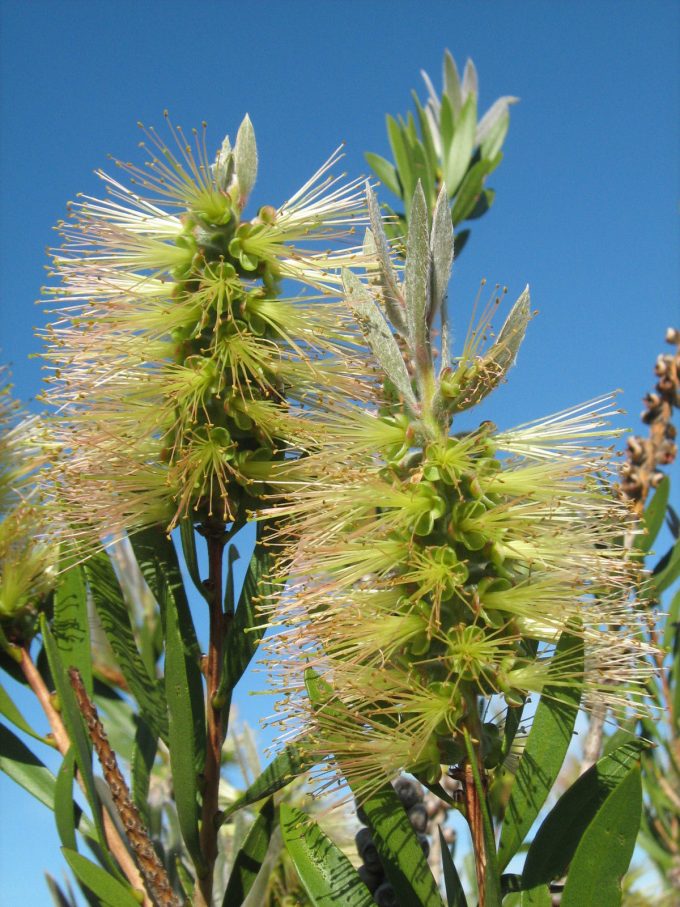Description
Open to spreading, multi-stemmed tree typically growing to a height of 20 metres (70ft) with rough brown bark at the base that becomes smooth and a coppery-creamy in colour above. It blooms between March and October producing creamy-white flowers. Often cultivated in open areas, wider verges, in parks and reserves and as a shelter wind-break or for erosion control. It is also known to be good for honey production. Nectar-eating birds and insects use it for food and habitat. The yellow tailed black cockatoo consumes the seeds of this species








